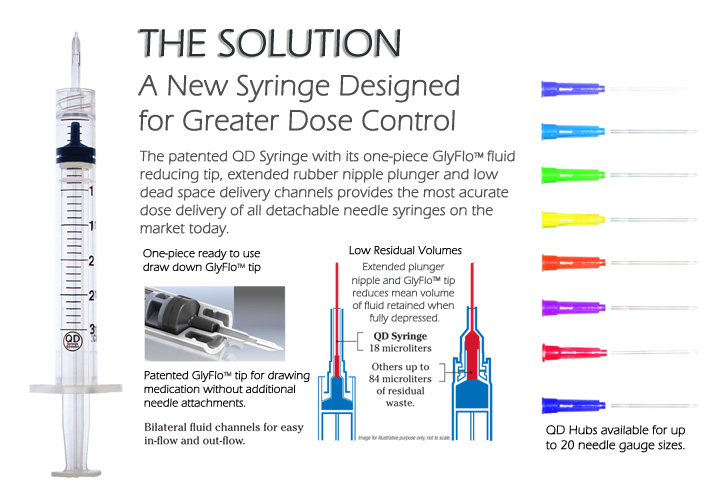Syringes are a surprising source of wasted medication
Better syringe design can save thousands of dollars per year
(Chapel Hill, N.C., June 6) – When medicine is injected, a little bit of it stays behind in the syringe. It’s not much, but depending on syringe design and the cost of the drug, this waste — or dead space — can add up to as much as $2,300 per year for a patient, according to a new study from researchers at the University of North Carolina at Chapel Hill and RTI International.
Syringe dead space is the leftover fluid that remains inside the syringe after the plunger is fully depressed. In syringes with a lot of dead space, the leftover amount averages to three percent of the volume of the medication dose. In syringes with a low-dead-space design, the volume of leftover medication averages 10 times less at 0.3 percent.
“It is a difference of fractions of a milliliter, but when some of these medications cost more than $20,000 a month, it adds up,” said Christine Oramasionwu, lead author of the study and an assistant professor in the nation’s No. 1 ranked UNC Eshelman School of Pharmacy. “Low-dead-space design, like those with an integrated needle or a cone-shaped plunger, should be adopted as the industry standard for all syringes in order to reduce preventable and expensive medication waste.”
UNC-Chapel Hill and RTI researchers, whose work is reported in the June 6 issue of JAMA Internal Medicine, identified 17 medications administered using high-dead-space syringes and seven using low-dead-space syringes. The total volume of the injection ranged from one-fourth to five milliliters for high-dead-space medications and 0.08 to one milliliters for low-dead-space medications. The median cost for a month’s supply of medication packaged in high-dead-space syringes was $4,443 and $3,412 for low-dead-space syringes.
The median value of the wasted medicine per dose was $5 for high-dead-space medications and about fifty cents for low-dead-space medications. Over one year, the cost of the waste for high-dead-space medications ranged from $558 to $2,329 (a median value of $1,638) compared to $68 to $205 (a median value of $125) for low-dead-space medications.
The researchers reported the median, or middle value, of most monetary ranges because of the high variability of cost among the relatively small number of medications included in the study. The high and low price for a 30-day supply of the 17 high-dead-space medications was $50 and $20,552. The high and low price for a 30-day supply of the seven low-dead-space medications was $716 and $29,728.
About the University of North Carolina at Chapel Hill
The University of North Carolina at Chapel Hill, the nation’s first public university, is a global higher education leader known for innovative teaching, research and public service. A member of the prestigious Association of American Universities, Carolina regularly ranks as the best value for academic quality in U.S. public higher education. Now in its third century, the University offers 77 bachelor’s, 113 master’s, 68 doctorate and seven professional degree programs through 14 schools and the College of Arts and Sciences. Every day, faculty – including two Nobel laureates – staff and students shape their teaching, research and public service to meet North Carolina’s most pressing needs in every region and all 100 counties. Carolina’s more than 308,000 alumni live in all 50 states and 150 countries. More than 167,000 live in North Carolina.
UNC Communications and Public Affairs contact: Thania Benios, (919) 962-8596, thania_beniois@unc.edu
UNC Eshelman School of Pharmacy contact: David Etchison, (919) 966-7744, david_etchison@unc.edu
___________________________________________________________________________________________________
Websites:

